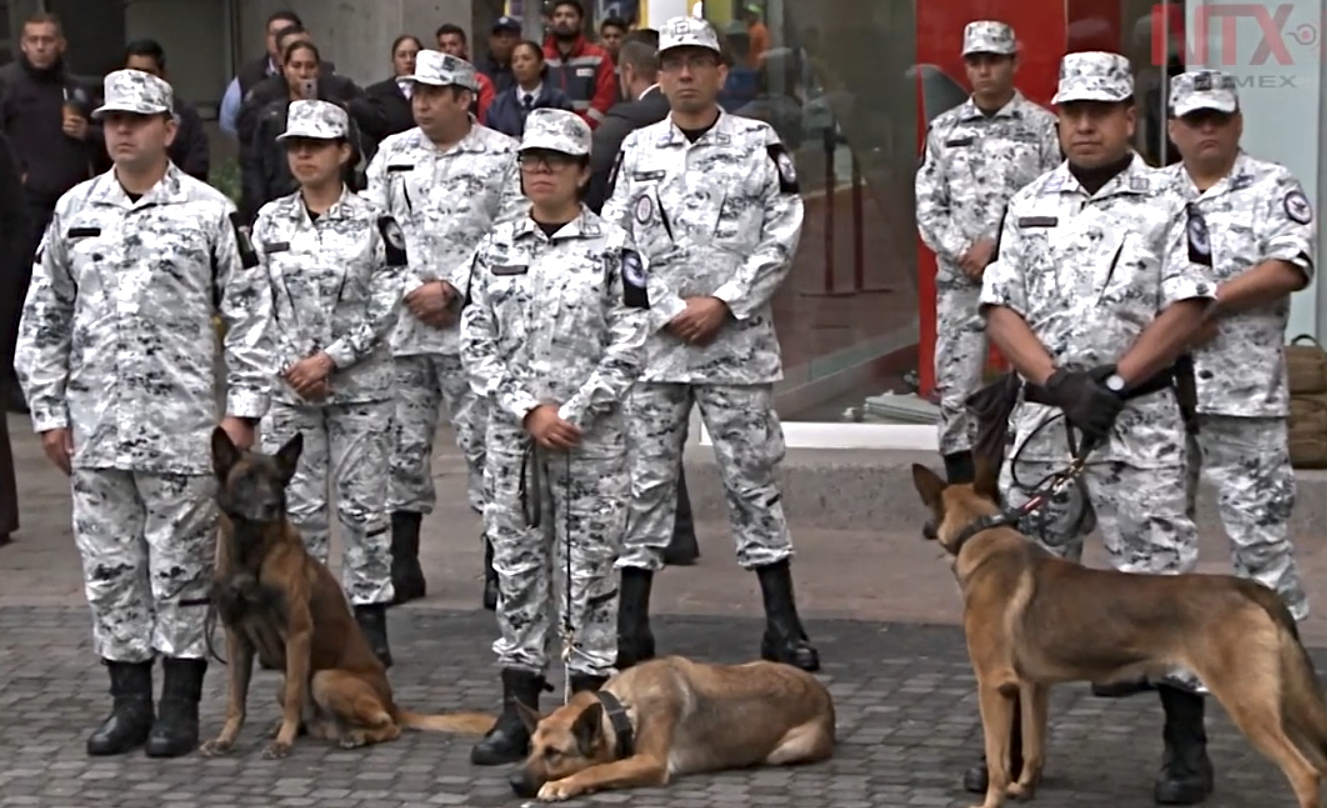Amid high expectations, and on a popular mandate to curb violence across the country, Andrés Manuel López Obrador (commonly known as AMLO) won the Mexican presidential election in early July 2018. However, by November, the then president-elect AMLO dismayed some of his electorate by placing the National Guard under military command, as a core element of his plan to undercut organised crime and pacify the country. According to some security pundits and human rights advocates, a militarised National Guard would not only reproduce but also escalate the problems associated with the failed public security strategy of his predecessors. Moreover, this process would embed these problems within the Constitution itself.
More recently in February 2019, after a vibrant period of activism from – and debate with – members of non-governmental organisations, the Chambers of Congress approved the constitutional changes for the creation of the National Guard. Although these amendments still need to be approved by at least 17 out of the 32 state congresses, it appears likely that they will follow suit. While the final version of the initiative has been widely accepted among civil society groups, following important modifications in relation to earlier iterations of the plan, the creation of the National Guard continues to generate scepticism and doubts. On this occasion, I would like to focus on two contentious issues surrounding the National Guard’s character: its deployment and, command and control.
Deployment
Initially, the National Guard will fuse 60,000 elements from the military, naval and federal police corps. By the end of this year, the government expects to have an 80,000-member force and has estimated an overall force of 130-150,000 members within three to four years. Yet, this is still a proportionately small number of troops relative to the size of the country. This in itself represents a major challenge. To recruit, certify and train new personnel within this time frame is an ambitious undertaking that is likely to encounter challenges along the way. In order to enable the National Guard sufficient time to gather enough manpower to take up its task, the Armed Forces (i.e. soldiers and marines) will continue participating in public security operations for a further five years.
In addition, some security analysts have seen potential contradictions at an operational level. They state it is unclear whether, on the one hand, the National Guard will operate permanently in the 266 regions which the new administration has appointed as part of its security strategy, or if, on the other hand, it will be assembled temporarily in support of state and municipal police forces wherever needed. However, instead of a contradiction, the permanent/temporary dichotomy may perhaps shift in response to operational imperatives. The creation of the National Guard continues to generate scepticism and doubts.
In this regard, the case of the US troops´ withdrawal from Afghanistan is an example of what not to do. In December 2009, President Barack Obama made two big announcements: a) the surge of US troops in Afghanistan, and b) a definitive withdrawal plan beginning in July 2011. By promising withdrawal just one-and-a-half years after the surge, in some ways, these announcements ended up neutralising one another. This had serious implications for the troops on the ground. It emboldened the Taliban to co-opt, intimidate or coerce Afghan communities with a simple and self-evident message: “they will go, you will stay”. This shift in US policy in Afghanistan puzzled both political and social actors both at the local and national level, inhibiting collaboration and intelligence provision from Afghan citizens out of fear of retaliations from insurgents. It also interrupted the process of building security institutions in the country by placing a deadline on the commitment. Similarly, for the Mexican scenario, temporary operations of the National Guard may have impact in three ways: it would encourage organised criminal groups to co-opt, intimidate or coerce local communities; shut out the possibility to gain granular information for intelligence purposes from local communities; and damage any serious attempt to build institutions at the state and municipal levels.
The National Guard will need to maintain a constant presence in what Thomas Risse (2012) has called ‘areas of limited statehood’, such as rural communities and violence-plagued metropolitan centres key to national development. To sustain this effort for as long as it is needed will demand huge political will. It will be equally crucial that the use of force produces tangible political outcomes (e.g. state-building, economic development, peace-building processes and development of local governmental capacity). Indeed, there are multiple underlying risks that should be averted. Chief among them is that the National Guard ends up substituting the state and local police forces. Should this happen, the new administration’s security policy will present a continuation of, rather than a rupture from, previous administrations.
Command and Control
According to the final draft approved in Congress, the National Guard will be part of the civilian Ministry of Security and Citizen Protection (MSCP), and not the Ministry of Defence as it was initially envisaged. This could guarantee civilian control of the National Guard and the means for a clear authority to put in place the desired political ends. However, it is equally plausible that an active or retired military official will head the new security body, and the operational command in the aforementioned regions will be a member of the Armed Forces. Although not optimal, this could work in the early stages of the National Guard, insofar as the political authority (i.e. MSCP) would bring clear political guidance to the effort. On the other hand, the National Guard would define the distribution and application of the means necessary to achieve operational and tactical gains in accordance with the security policy.
There are multiple underlying risks that should be averted, chief among them is the National Guard substituting the state and local police forces.
Here, it is worthwhile to highlight the urgent need to recalibrate the use of force in the Mexican scenario. One of the main criticisms of the National Guard is that its mind-set and ethos are likely to be military-oriented. By and large, it would be fair to say that a soldier makes a lousy policeman. This being said, it could be very worthwhile revising cases where incorporating different elements into military doctrine have been very effective in managing large-scale violence settings. An example of this is what in the Afghan case was called courageous restraint. As international cases have taught us, it is likely that there will be implicit costs in and resistance to such changes. But, it is also essential to dissect the kinds of uses of force employed, and to cast doubt on some studies that suggest that military operations, per se, are correlated to a surge in violence in Mexico. Instead, a better analysis would highlight that the way in which force is employed is a key factor contributing to the decline or increase of violence.
Conclusion
The National Guard will likely be subject to considerable modifications and improvements in the years to come. Indeed, there are still questions to be answered. For example, how will the National Guard deal with what Haugen and Boutros (2014) have called low-level everyday violence? This poses an even greater challenge if we consider the changing characteristics in the criminal underworld as it becomes increasingly fragmented and diverse, while simultaneously geographically dispersed and localised. We must also ask in what ways could the implementation of the National Guard be turned into political outcomes? This is particularly pertinent when talking about the strengthening of state and local police institutions. Finally, we should question whether the government and civil organisations will ensure that the use of the Armed Forces will be exceptional, regulated, oversighted, subordinated and supplementary. This question should come first as a matter of priority – before implementation.
There is no silver bullet to curb large-scale violence and insecurity in Mexico. As Mike Tyson would say, “Everybody has a plan until they get punched in the face”. Now that the National Guard has been approved, we must to try seek answers to fundamental questions about how best to actually make it work.
Fausto Carbajal Glass is a researcher and consultant on political risk and security. He holds a Master degree in War Studies from King´s College London, where he focused on strategic theory, counterinsurgency and strategic communications. His professional career has been mainly in the Mexican government, particularly at the Ministries of the Interior and Foreign Affairs. He is member of the World Future Studies Federation (WFSF), the Mexican Council on Foreign Relations (COMEXI), the Mexico Research Centre for Peace (CIPMEX), and a non-resident fellow of the Mexican Navy Institute for Strategic Research (ININVESTAM).
Main Image Credit: Notimex, via Youtube.
The views expressed in this article are those of the author(s) and do not necessarily reflect the views of RUSI or any other institution



